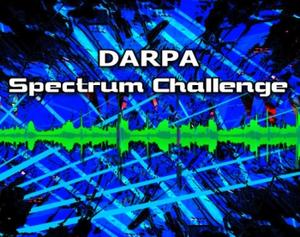CommunicationTeams show robust radio techniques at Spectrum Challenge event
Radios are used for a wide range of tasks, from the most mundane to the most critical of communications, from garage door openers to first responders to military operations. Wireless devices often inadvertently interfere with and disrupt radio communications, and in battlefield environments adversaries may intentionally jam friendly communications. To stimulate the development of radio techniques that can overcome these impediments, the agency launched its Spectrum Challenge — a competitive demonstration of robust radio technologies that seek to communicate reliably in congested and contested electromagnetic environments without direct coordination or spectrum preplanning.

DARPA's challenge seeks to develop secure, persistent radio communications // Source: rutgers.edu
Radios are used for a wide range of tasks, from the most mundane to the most critical of communications, from garage door openers to first responders to military operations. Wireless devices often inadvertently interfere with and disrupt radio communications, and in battlefield environments adversaries may intentionally jam friendly communications. DARPA says that in order to stimulate the development of radio techniques that can overcome these impediments, the agency launched its Spectrum Challenge — a competitive demonstration of robust radio technologies that seek to communicate reliably in congested and contested electromagnetic environments without direct coordination or spectrum preplanning.
On 11-12 September 2013, eighteen teams from around the country converged on DARPA in Arlington, Virginia, to demonstrate their prototype software-defined radios during the contest’s first live competition. The contestants included the fifteen highest-scoring teams and three wildcard teams from the ninety teams that initially registered. After two days, teams from Northeastern University and Vanderbilt University emerged as the most successful competitors, each earning a $25,000 prize. In all, the DARPA Spectrum Challenge plans to award $150,000 in prizes.
In addition to this preliminary event, the Spectrum Challenge also plans to hold a final event in March 2014. Both events are multiple-elimination and have each team play at least three matches. All eighteen teams are scheduled to play both events. The Final Challenge competition is slated to follow the same structure as the preliminaries but award twice the prize money — $50,000 per winning team.
Both the preliminary and final events include two separate tournaments, each with its own goals:
- Competitive tournament: In each match, two teams battled to dominate the spectrum, with the winner being the first to transmit files of random data (or to successfully transmit the greatest proportion of the files) from a source radio to a destination radio. Teams had to evade, jam and/or operate in the presence of competitors’ signals within a defined 5 MHz UHF band. This event tested conditions directly applicable to military communications, where radios must deliver high-priority data in congested and often contested electromagnetic environments. MarmotE, a team from Vanderbilt University, took first place, with Tennessee Tech Telecom, a team from Tennessee Tech University, the runner-up.
- Cooperative tournament: In each match, three teams worked together to share the spectrum and transmit their random data files in the shortest time. Teams could not coordinate in advance on how to share the spectrum, so they had to develop and implement algorithms that enabled their software-defined radios to communicate at a high rate while leaving spectrum for the other two teams to do the same. This event tested conditions that might be encountered during coalition operations, and also has possible future commercial applications. WSL-NEU, a team from Northeastern University came in first, with an independent team — using the name “wasabi” — coming in a close second.
DARPA notes it provided all teams with the same hardware and data to ensure that each team would win or lose based on their software algorithms alone. All the matches occurred on the ORBIT testbed at Rutgers University’s WINLAB, which streamed the proceedings live to DARPA where contestants and government personnel watched the event unfold.
To help competitors see how their software compared with other teams’ designs, WINLAB developed data visualization technology for DARPA that showed the specific radio frequencies each team used and their progress in transmitting the test file. Based on color-coded spectrum occupancy patterns projected on large screens in the event hall, watchers could see how the radios interacted and infer each team’s likely strategies in real time.
Some matches were blowouts, some were close, and others required tie-breakers. In each match, participating teams sat quietly while the other teams murmured, shouted and even cheered based on what they saw — an atmosphere similar to sports fans watching a live event.
“The insights the teams gained today should give them their ‘big idea’ for the finals,” Yiftach Eisenberg, DARPA program manager heading the Spectrum Challenge said. “I expect we’ll see a massive increase in innovation when many teams come back six months from now with completely new designs. Those designs hopefully will build off the baseline algorithms and techniques we saw, and show us for the first time the reasoning and adaptive capabilities DARPA seeks to deliver.”
“I’m impressed with the creativity, enthusiasm, and performance of the teams that we’ve seen here today,” said DARPA Director Arati Prabhakar, who attended the final matches of both tournaments. “Their original contributions hold great promise in this fast-moving field.”
More information about the Spectrum Challenge is available here.
